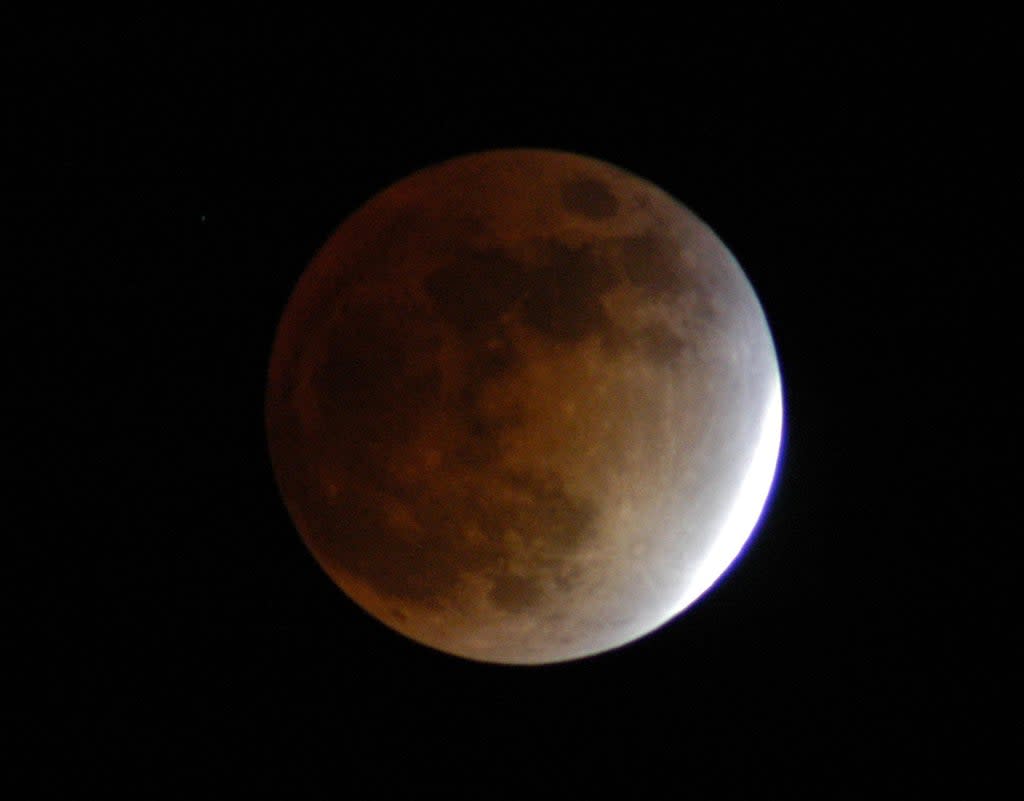Total lunar eclipse 2022: How to watch and stream the Blood Moon

The Earth will slide between the Moon and the Sun this weekend, our planet’s shadow falling on the darkened lunar surface and turning it reddish-orange for terrestrial observers.
It will be a total lunar eclipse, the first science 26 May 2021, and sky watchers in most of the world will be able to catch the whole show beginning on Saturday 15 May and wrapping up Sunday 16 May, assuming they know when to look and the local weather permitting.
Here’s what you need to know about the lunar eclipse.
What is a lunar eclipse?
A solar eclipse occurs when the Moon passes between the Earth and the Sun, casting a lunar shadow on Earth so that viewers see the Sun blocked out by the Moon. A lunar eclipse flips the roles, with the Earth coming between the Sun and the Moon, and the Earth’s shadow falling on the Moon.
The Moon will slide into the Earth’s shadow in stages, first entering the softer shadow of the Earth’s penumbra, which will be visible as a slight darkening at the Moon’s lower-left side as the eclipse as seen from North America.
The darkening will increase as the Moon moves into the deepest portion of the Earth’s shadow, the Umbra. This partial eclipse phase will last about an hour.
Once fully inside Earth’s umbra, the total eclipse begins. The Moon won’t black out as in a solar eclipse, but instead will glow a shade of red or orange, the exact hue depending on the content of Earth’s atmosphere at that time — the sunlight refracted through the edges of Earth’s atmosphere is what creates the glow on the Moon.
Totality will last around 75 minutes.
Although the Moon will not go completely dark, the sky will darken significantly during totality, and celestial features like the Milky Way should be visible.
After totality, the process reverses itself, with the entire eclipse lasting about five hours and 20 minutes.
Where can you see the total lunar eclipse?
Most sky watchers in North America, Central and South America, and many in Europa, Africa and the Eastern Pacific will be able to see the entirety of the eclipse, also although not everyone will see totality.
Those in Alaska, Australia, and East and Central Asia will miss out on this lunar eclipse, although New Zealanders may be able to catch a partial eclipse in the early evening of 16 May local time.

When can you see the total lunar eclipse?
The timing of the lunar eclipse depends on the viewer's location, so while New Zealanders won’t see the Moon rise until the eclipse is already at its peak, viewers on the US east coast can watch the whole show, with the partial eclipse beginning at 10pm Saturday.
The total eclipse begins at 12.29am for East coasters, with the peak at 1.12am and totality fading back into a partial eclipse around 1.54am. The eclipse will end by around 2.30am for those east coast viewers.
For those in Britain and Europe, the partial eclipse begins at 2.28am, totality begins at 3.29am and ends by 4.54am, and the eclipse ends by 6.30am.
How can you watch the total lunar eclipse?
Unlike a solar eclipse, no special safety glasses or instruments are required for viewing a lunar eclipse — you just need to look up in the sky at the right time.
However, binoculars or a good telescope allow for a more detailed view of the Earth’s shadow as it sweeps across the Moon’s surface. The subtle shading caused by sunlight filtering through Earth’s atmosphere, for instance, is easier to pick up with the aid of binoculars.
What if you miss the total lunar eclipse?
Whether you live in a part of the world where the Moon won’t be in the sky during the time of the eclipse or you simply forget to look up, you may get a second chance later this year. The next total lunar eclipse on 8 November will be visible from parts of the world left out of Saturday’s eclipse, including Asia and Australia, although Much of Africa and Europe will have to sit that one out.

